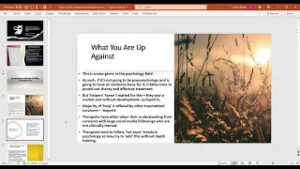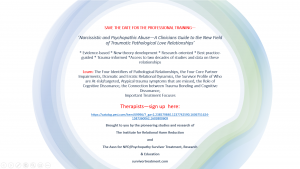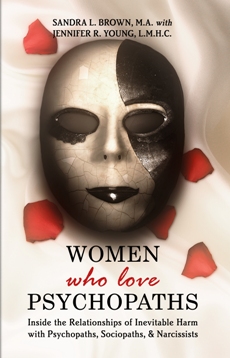Take the quizzes and see! If you are, find out what you can do to change your odds AND YOUR CHOICES!
People who are in dangerous relationships often have to manipulate reality in order to see their situation differently so they are able to stay in it. People who are repeatedly in dangerous relationships have an arsenal of “loopholes” they use to talk themselves into remaining in a go-nowhere dangerous relationship.
In order to change your patterns, it is important that you know what kind of loopholes you are using to avoid change, growth, and ending the relationship. These loopholes become a sort of “mantra” that people say over and over to themselves either consciously or subconsciously. It slowly reinforces their decision to stay despite the red flags they are having about these choices.
Some people have gathered sabotaging loopholes from what they think the culture expects of people in relationships. Some have learned these excuses from other people in their own family who have taught them to accept dangerous behavior in others.
8 Categories of Loopholes
- Minimizing Loopholes
- Generalizing Loopholes
- Justifying Loopholes
- Hyper-Hopefulness Loopholes
- Messiah Complex Loopholes
- Over-Crediting Loopholes
- Renaming Loopholes
- Future Avoidance Loopholes
TAKE THE MINIMIZING LOOPHOLE QUIZ BELOW
These loopholes take dangerous or unsatisfactory behaviors and make them less threatening by minimizing their true effects. This loophole is characterized by someone saying, “At least”
Check all that apply
AT LEAST they only drink beer/wine and not the hard stuff
AT LEAST they don’t hit me, they only yell, threaten, or degrade me
AT LEAST they work most of the time
AT LEAST they aren’t like my dad/brother/previous boyfriend/mom/sister/girlfriend
AT LEAST they come home at night/dates me/is still around
AT LEAST they pay the bills/help pay the bills
AT LEAST they don’t beat the children
AT LEAST they are someone to have around until someone better comes along
AT LEAST they
(fill in what you normally say)
ADD UP TOTAL NUMBER OF POINTS
**
People who use Minimizing Loopholes normally use many of the other categories of loopholes also. What OTHER categories do you use? Find out–order the book and workbook and take the tests–find out exactly
what you are telling yourself.
Am I In Danger of Dating * MORE * Pathologicals?
Give yourself 2 points for a “Yes” answer, 0 point for a “No” answer.
I have dated more than one person that others would have considered “dangerous”
**I have dated more than three dangerous/pathological persons
**I have dated five or more dangerous/pathological people
I have broken up and gone back with a pathological person
**A dangerous person I dated would have fallen in the “violent” category
**A pathological person I dated would have fallen in a combination of categories of violent, addicted, and mentally ill
A dangerous person I dated would have fallen in the mentally ill category
I have a pattern of ignoring my red flags
**Ignoring my red flags has put me at-risk with dangerous people
I don’t even know what my red flags are
Friends and family are upset over the types of dangerous relationships I pick
I don’t know what healthy relationship patterns are
I fluctuate between people who are emotionally unavailable and aloof to people who are dependent, needy and clingy
I don’t fluctuate in the type of people I date–I keep picking the same type of person, even though it hasn’t worked in the past
ADD UP THE TOTAL NUMBER OF POINTS
NOW ADD UP YOUR TOTAL NUMBER OF POINTS FROM BOTH SECTIONS
In considering your own personal risk factors for dating dangerous people you must also consider WHICH answer you checked on the scale which indicate a HIGHER risk and should raise greater concern if these were marked. Any of those with an “*” indicate higher risk factors.
The Pathological Relationship Risk Scale (Non-clinical scale)
0 – 8 points =
Lower Risk (unless you have marked those questions with an **.)
10 – 18 points =
Moderate Risk (unless you marked those questions with an **.)
20 – 32 points =
High Risk (exceptionally high risk if you also marked those questions
with an **.)
Now What?
If you indicated a “Moderate” to “High Risk” on this quiz, you owe it to yourself to get the How to Spot a Dangerous Man Workbook and/or services the Institute offers to give you the opportunity to decipher your own personal patterns of dangerous selection.






